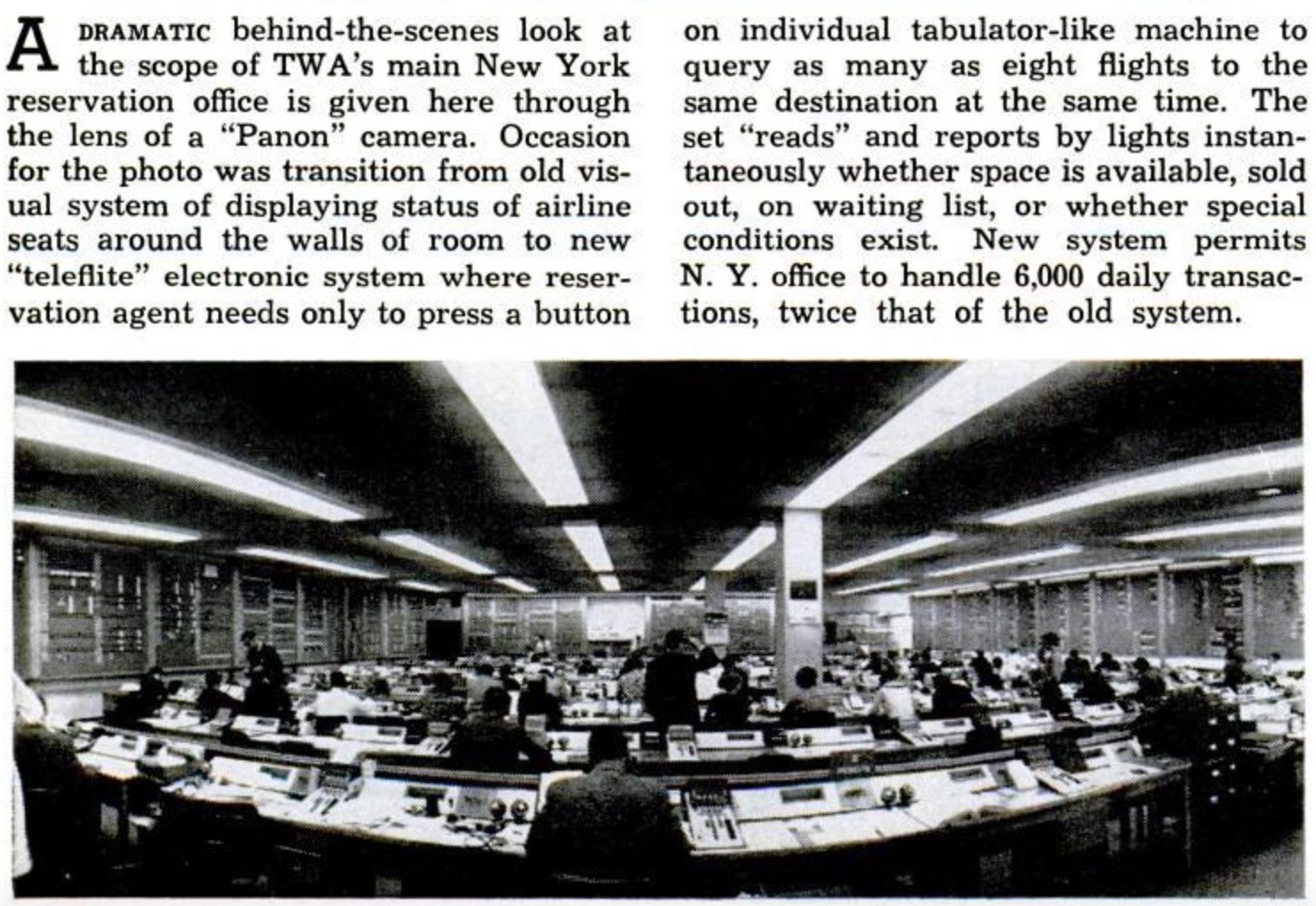I found a full account of pre-computerized reservation systems on Wikipedia's Reservisor article. The account is sourced to a single book, which I cannot get due to worldwide library closures, but compared to the accounts in the question it has far more details on what made the binoculars necessary.
At the time, bookings were handled by a system known as "request and reply". Booking data for any particular flight, say Buffalo to Boston, would be handled by a single office. Here, each scheduled flight was represented by an index card known as a flight card. The offices were normally located at one of the airports involved, but were increasingly centralized at major airports or located at a telephone company switching office to ease the adding or removing of phone lines.
In order to book a ticket on a flight, a sales agent would call into the right booking office and request information on a particular flight. The booking agent would then walk over to a filing cabinet and retrieve the flight card. They would then return to the phone to tell the sales agent if there were any seats available. If there was an available seat, they simply checked off a box, informed the sales agent, and returned the card to the cabinet.
Problems occurred when the flights were close to full. In that case the booking agent would have to inform the sales agent that there were no seats, and the sales agent would then ask the customer if there were any other flights they might choose as an alternative. The booking agent would have to return to the cabinets each time to retrieve the flight cards; since there were many booking agents who might want to retrieve the cards, the agents couldn't take more than one at a time. During busy schedule periods, this process could stretch out the booking process indefinitely.
In 1939 [American Airlines] implemented a new system called "sell and report" that reduced the reporting needs by allowing any office to book seats without calling the central office until 75% of the seats were sold. Each office had a board of future flights that consisted of a single hole representing a flight; when the flight reached 75% a large peg was inserted that the booking agents could see, sometimes using binoculars. Once the flight had been pegged, the agents reverted to the older centralized booking system. In an era where aircraft rarely flew with 75% of the seats filled, this system dramatically reduced the number of phone calls.
And with that magical key phrase "sell and report," I was able to find the photo you were looking for!

This 1956 photo from PanAm's reservation room matches a written description of AA's system (from Copeland et al. cited below):
A large cross-hatched board dominates one wall, its
spaces filled with cryptic notes. At rows of desks sit
busy men and women who continually glance from
thick reference books to the wall display while continuously talking on the telephone and filling out
cards. One man sitting in the back of the room is
using field glasses to examine a change that has just
been made high on the display board.
Additionally, here is a 1958 photo of the TWA reservation room during the process of partial computerization, printed in the March 1959 issue of Flying Magazine. I cannot read what is written on the walls in this photo, but it appears from the caption that this room used to have a similar system and you can see that binoculars would have been helpful. According to other TWA sources full computerization in a new central building was not achieved until 1961.

Sources
- James McKenney et all, Waves of Change: Business Evolution Through Information Technology, Harvard Business Press, 1995, ISBN 0-87584-564-9 (the book quoted on Wikipedia)
- J. Eklund, "The Reservisor automated airline reservation system: combining communications and computing," in IEEE Annals of the History of Computing, vol. 16, no. 1, pp. 62-69, Spring 1994.
- D. G. Copeland, R. O. Mason and J. L. McKenney, "Sabre: the development of information-based competence and execution of information-based competition," in IEEE Annals of the History of Computing, vol. 17, no. 3, pp. 30-57, Fall 1995.
- Photos from American Airlines C.R. Smith Museum (via blog and Pinterest) and Flying Magazine (via Google Books)


